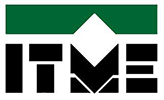Clean-rooms meet the most sophisticated requirements related to the nature of the research carried out there. This does not only apply to extremely high air purity requirements, temperature and air humidity, but also to the purity of technological gases and chemical reagents. Laboratories enable the construction of various structures, devices and circuits – both electronic, photonic, as well as semi-conductor microsystems, which can be applied in different areas of life, starting from communication (information transfer and processing), through to transport, security, energy harvesting and management, and finally health care.
Due to mutual incompatibility of technologies and materials the platform was divided into the following zones:
- silicon-compatible technology
- silicon-non-compatible technologies (alternative semiconductor materials)
- nanolithography (including electron beam lithography)
- ion implantation
Laboratories of this platform enable manufacturing of various structures, devices and circuits including: electronic, photonic, as well as MEMS/MOEMS.
Individual labs are dedicated to work with different materials for silicone and its compounds, while the alternative semiconductor lab focuses on wide bandgap semiconductors, among others for the construction of high power electronic devices and semiconductor spinotronics). Both labs for semiconductor material technologies offer the possibility of fabricating very thin layers with a predetermined chemical composition or profile, with thicknesses varying from single atomic layers up to several dozen micrometres. It will also be possible to fabricate incredibly small objects (quantum wires and dots) – so small that their size will allow for the use of their quantum nature in practical applications. Key technological devices which will enable the execution of such work at CEZAMAT include devices for molecular beam epitaxy and for deposition of metaloorganic compounds vapour (MOCDVD and ALE), and for deposition of layers in the presence of high-frequency plasma using magnetrons or ultrahigh vacuum using high-energy electron beam vacuum evaporators. The growth of structures, devices, circuits and systems also requires the possibilities of defining features using lithography and controlled digestion (dry and plasma-assisted).
Extremely small objects will be handled with electron beam lithography (e-beam lithography) which allows to the definition of objects on a nanometeric scale. The lab for ion implantation allows the processes of controlled insertion of dopant atoms into solids to satisfy the needs of all kinds of technologies.
The platform will also host work on the creation of materials to build devices that use both electric charges of electrons flowing through a semiconductor (as is the case in conventional electronics), as well as their internal angular momentum, i.e. spin (which may decrease the power supply necessary for these devices).
The lab for hybrid technology, treatment and assembly of structures and circuits takes a special place on the platform. It will specialize among others in the assembly and encapsulation, as well as sealing the covers of structures and devices made in other labs, providing them with the final form of a useful element or circuit. Moreover, scientists will work there on the technologies of putting layers and objects with the required shapes on organic and elastic substrates (“elastic electronics or textronics”).















